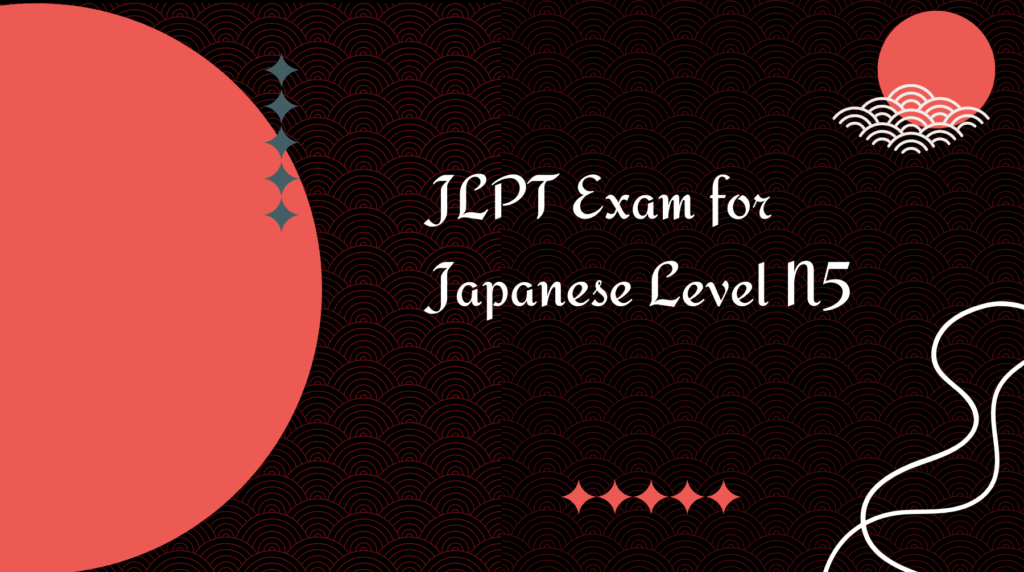Japanese N5 – JLPT Certification Exam Pattern

Curiosity is the driving force behind the learning process. It’s true but What if it’s also backed up with self testing and examining? It’ll just do wonders.
The Japanese language proficiency test is one such way to observe one’s learning path and efficiency in the language. These exams are divided into levels like JLPT for N5, N4, N3, N2 and N1 just like their levels based on the difficulty. The exams are administered by the Japan Foundation overseas and are held twice a year only. The first Sunday of July and December marks the exam day in Japan and many other countries including India.
Entire exam is on multiple choice questions. The total time required for the test is 105 minutes. Where the language knowledge and vocabulary amounts to 25 mins, Grammar to 50 mins and listening to 30 mins.
Information on JLPT Exam & Exam Dates in Pune – http://www.jaltap.org.in/
Information on JLPT Exam & Exam Dates in Mumbai – https://www.taojmumbai.com/jlpt/
Other Centers all over the World – https://www.jlpt.jp/e/application/overseas_list.html
Structure of Japanese-Language Proficiency Test
1. Vocabulary (Goi)
It consists of Kanji knowledge and word knowledge. There are around 8 multiple choice questions, where you need to mark the correct reading for kanji or via a versa. You may also need to find an appropriate work for the blanks.
In short it’s a section about words. Around 100 kanjis and 400 – 500 words are covered in the first level.
2. Grammar and reading – Bunpo and Dokkai
This section consists of Grammar based questions and passage based questions. The focus lies on the basic grammar. The particles, the verbs and their forms, the adjectives and their form and so on. One must pick the correct option from the four given options. Another important part is, Reading the comprehension, understanding it and solving the questions related to it.
3. Listening –
In Japanese-Language Proficiency Test for N5, you listen to very basic and simple audio tracks, mostly in the form of conversations. You need to identify the correct option based on the audio and in a segment, you need to find out which greeting matches a particular picture. For exam joining hands before starting a meal – Itadakimasu
We can clearly see that there is no specific section for speaking. Hence it is neglected by the students. One must practice speaking on their own and in the class, whenever given a chance. This is a negative aspect about the Japanese level proficiency tests, but with the correct guidance and training, one can attain the ability to communicate in Japanese language.
4. The passing Criteria for JLPT N5-
The vocabulary, grammar and reading sections sum up to 120 marks out of which one needs 38 marks to pass. Listening has 60 points out of which one needs 19 points to pass. It doesn’t stop there, the overall score has to be more than 80 points out of 180. This seems to be a difficult part for most of the students but it actually isn’t. If we try to compute this in figures, it is less than 50% of the whole (180)
Here is a link to the Sample Paper
https://www.jlpt.jp/e/samples/forlearners.html
Exam fear is real, but if you’re friends with consistency, studying and practicing . In no way will the exam be an obstacle. You will like it and succeed.
Know precisely what all you need to learn in our blog Japanese N5 Syllabus


